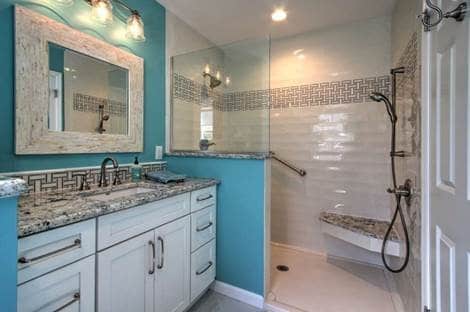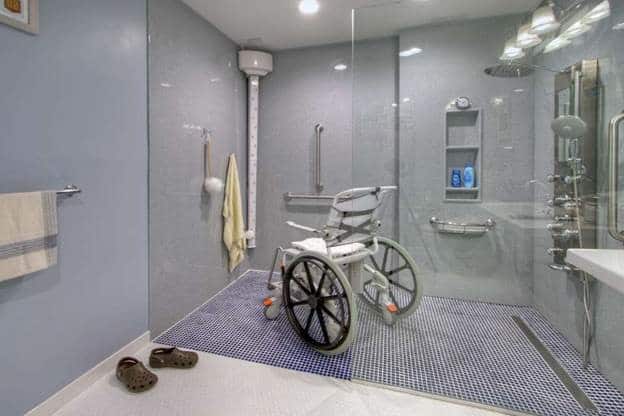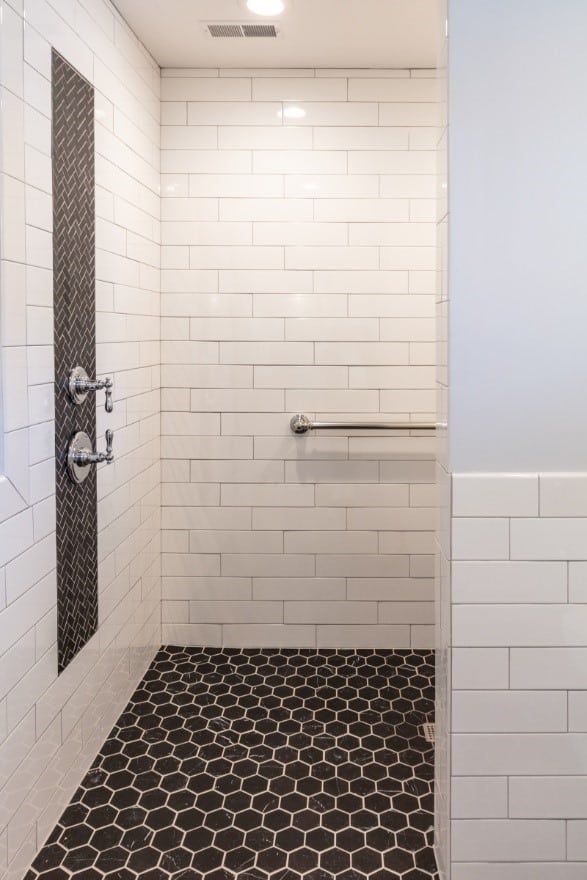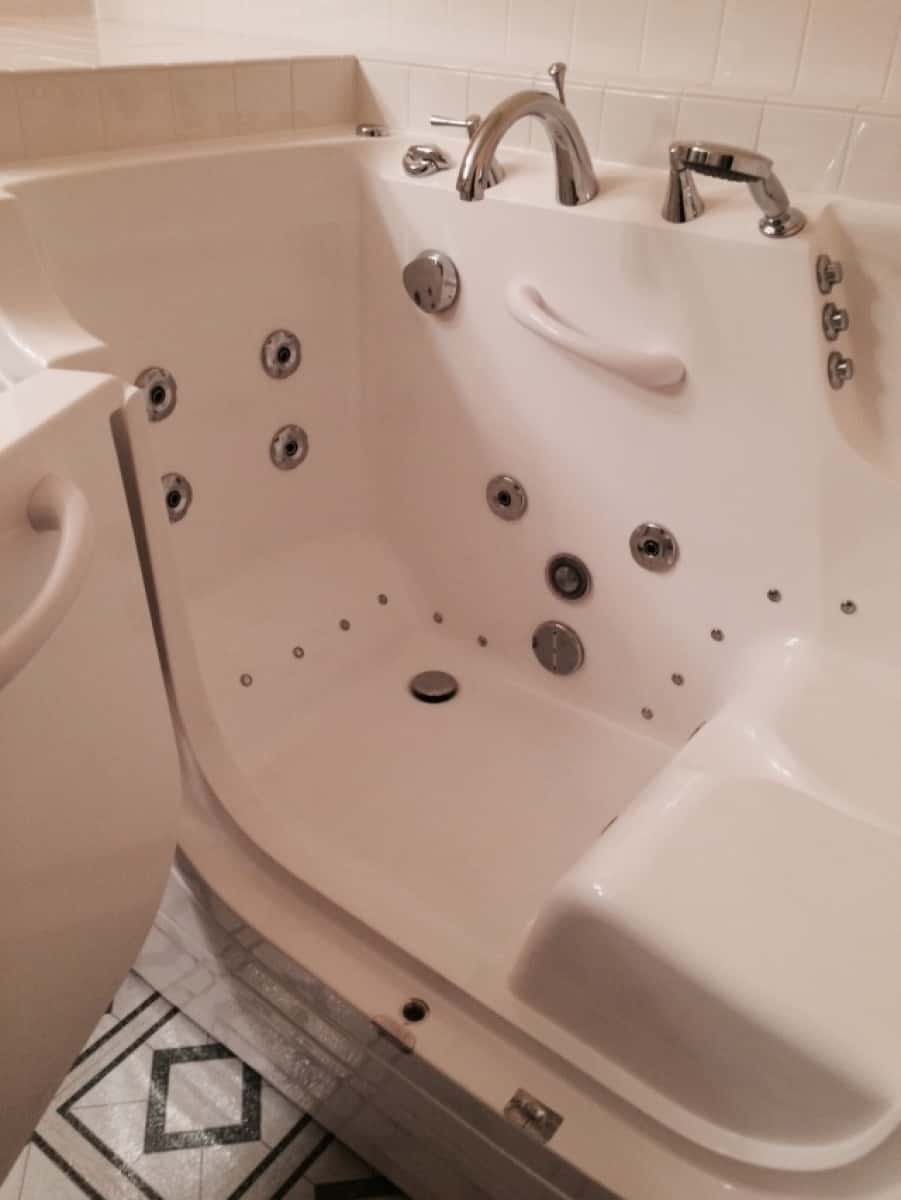When beginning a bathroom remodel, there are many factors to consider, like vanity style, tile selection, paint color and more. Probably the biggest decision you’ll face though is what to do regarding the shower and/or tub. There are so many options, like traditional shower/tub combo, separate shower/soaking tub, only a shower, etc. So how do you decide which choice is best for your needs?
Currently, it seems that all the rage is the “walk-in shower.” Yes, one can reason that you “walk into” all showers, but this type is intentionally designed to remove the need to step in and out of a tub or shower base. In many cases the floor of the shower is continuous with the rest of the bathroom, to enhance the seamless effect. So, there are no barriers, thresholds or shower doors. The recent rise in popularity of walk-in showers affords a wide variety of styles and options for walls, shower heads, fixtures and the shower floor.
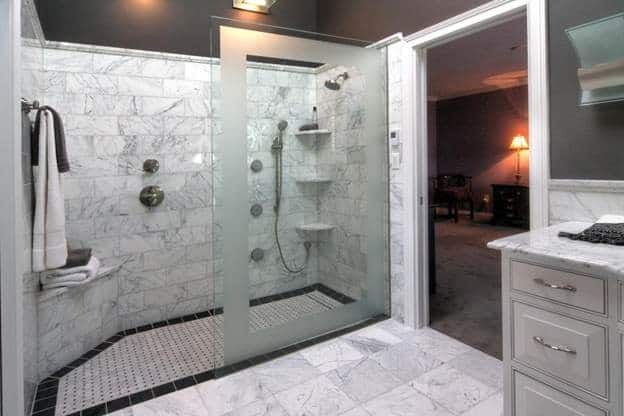
There seems to be a trend with many people not using their bathtub, opting instead to solely utilize the shower. So, homeowners are choosing to remove the tub all together! However, keep in mind home resale value before converting all your tubs to walk-in showers. Optimally, your home should have at least one bathroom with a full-size tub. Appraisers and real estate agents classify bathrooms by fixtures, and, in order to qualify as a “full bath,” there must be a tub. Technically, a bathroom with a shower and no tub is deemed a “three-quarter” bath.
The walk-in shower becomes an attractive alternative in that it provides a more open, spacious area to bathe. A beautiful glass enclosure can become a focal point for your bathroom interior design. The openness and thoughtful design make the shower more likely to be a modern element. However, based on the variety of product options, you can certainly make this style coordinate with a traditional scheme, as well.
With its larger size, the walk-in shower also has a separate drying area. So, you can simply take a few steps over, and stay nice and warm as you towel yourself dry, without dripping water onto the bathroom floor.
Let’s look at some of the other advantages and possible downside of the walk-in shower.
ADVANTAGES
1.) Accessibility
One of the biggest advantages of the walk-in shower, besides the aesthetics, is the accessibility factor. For people that face mobility problems or those suffering from joint pain, a walk-in shower does not require them to make extra effort while getting in and out. This also reduces risks of falling that is a major concern when it comes to the elderly or children. Additionally, due to no curb or threshold, wheelchair users have ease of entry, then plenty of space to maneuver within the shower.
Note that “accessible” design usually refers to products/facilities that can be independently used by people with an array of disabilities (used often in context with the Americans with Disabilities Act). Barrier-free showers commonly include more grab handles than regular showers. With sturdy grab bars always within reach, mobility-limited individuals can feel stable and confident. A shower seat is another desired feature.
2.) Easy to Clean/Fewer Clogs
Walk-in showers do not have the normal curves and crevices of a traditional tub/shower combo. So, there are less places for the soapy residue and mildew to build up which makes it very easy to clean. Those bathtub crevices also can keep water from flowing smoothly into the drain, leading to clogs. One plumbing trick to make your shower floor sleeker is a linear shower drain. They are available with “hidden plates” (so you can’t tell a drain is there) and assist in moving water quickly out of the shower so you’re not standing in a pool of water when your drain clogs.
3.) Spa-Like Experience
An open, barrier-free walk-in provides sight lines into the wet area which can show off a luxury shower. The large, open area can include a bench/seat to sit and just envelope yourself in relaxation. One asset to the walk-in is a multi-nozzle spray, a standard feature in many walk-in showers. Depending on your individual preference, you can have as many as 10 spray nozzles directing water to all sides of your body. A rain-mount shower head from the ceiling is also a popular choice.
DISADVANTAGES
1.) Cold
With the many advantages offered by the walk-in shower, there is one main drawback…COLD. Since there is no enclosure to capture the heat generated by a hot shower, you may end up with a draft and chill. If you are one for fast showers, you’re probably ok. However, if you like to languish and spa yourself, you can always install heated flooring. When Mosby puts in walk-in showers, designers will position an exhaust fan/heater near the shower opening because it blows heat into shower. It also generally helps warm the entire bathroom.
2.) Less Privacy
Another con is less privacy than standard stalls with a door. It really comes down to personal preference and comfort level.
Recently, the “walk-in tub” has been touted as a good option for seniors aging in place and people with disabilities, due to an array of features designed to reduce falls, with built-in handrails, an ADA compliant overall design, contoured built-in seating, and a low-step height for entry. However, it isn’t the right fit for everyone, so it’s important to weigh all the pros and cons before you decide to install one.
If you are interested in starting a bathroom remodel, contact our Mosby Building Arts design build professionals to begin the process. Call us at 314-909-1800 today!




